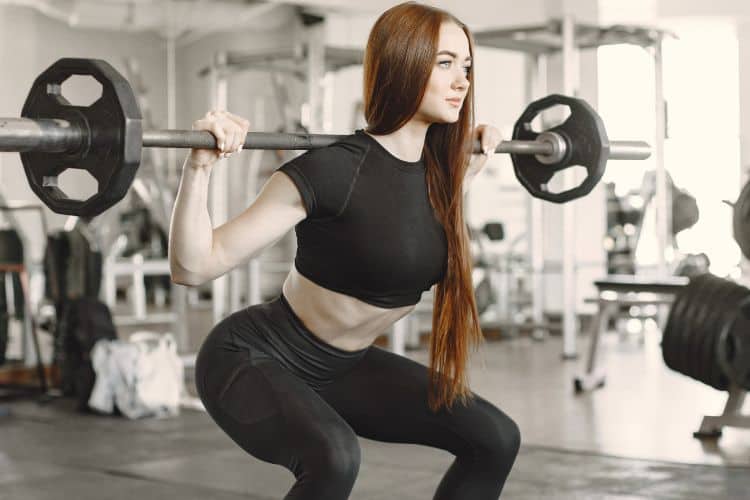What Is The Best Workout Split To Do For Women
When it comes to fitness, there is no one-size-fits-all approach. Women, in particular, have unique physiological and hormonal factors that can influence their fitness journey. Whether you’re a beginner or an experienced gym-goer, finding the right workout split can make all the difference in achieving your goals. In this blog post, we’ll explore the best workout splits for women and provide detailed guidance on how to perform them effectively.
What Is A Workout Split?
A workout split is a way of organizing your training routine by dividing your workouts into different muscle groups or types of exercise over the course of a week. This approach allows you to focus on specific areas of your body, optimize recovery, and prevent overtraining. The key is to choose a split that aligns with your fitness goals, schedule, and experience level.
Benefits of Workout Splits for Women
- Targeted Muscle Development: Workout splits allow you to focus on specific muscle groups, leading to more effective muscle growth and toning.
- Improved Recovery: By alternating muscle groups, you give each area time to recover, reducing the risk of injury and overtraining.
- Flexibility: Workout splits can be tailored to fit your schedule, making it easier to maintain consistency.
- Variety: Different splits keep your workouts interesting and prevent boredom, which can help you stay motivated.
Popular Workout Splits for Women
1. Full-Body Workout Split
What is a Full-Body Workout Split?
A full-body workout split involves training all major muscle groups in a single session. This type of split is ideal for beginners or those with limited time, as it ensures that you work your entire body in each workout.
How to Perform a Full-Body Workout Split
- Frequency: 2-3 times per week, with at least one rest day between sessions.
- Exercises: Include compound movements that target multiple muscle groups, such as squats, deadlifts, bench presses, and rows.
- Sets and Reps: Perform 3-4 sets of 8-12 reps for each exercise.
- Rest: Take 60-90 seconds of rest between sets.
Sample Full-Body Workout Routine:
- Squats: 3 sets of 10 reps
- Deadlifts: 3 sets of 8 reps
- Bench Press: 3 sets of 10 reps
- Bent-Over Rows: 3 sets of 10 reps
- Plank: 3 sets of 30-60 seconds
2. Upper/Lower Body Split
What is an Upper/Lower Body Split?
An upper/lower body split divides your workouts into upper body and lower body sessions. This split allows you to focus more intensely on each area while still providing adequate recovery time.
How to Perform an Upper/Lower Body Split
- Frequency: 4 times per week, alternating between upper and lower body workouts.
- Exercises: Choose a mix of compound and isolation exercises for each session.
- Sets and Reps: Perform 3-4 sets of 8-12 reps for each exercise.
- Rest: Take 60-90 seconds of rest between sets.
Sample Upper Body Workout Routine:
- Bench Press: 3 sets of 10 reps
- Dumbbell Shoulder Press: 3 sets of 10 reps
- Lat Pulldown: 3 sets of 10 reps
- Bicep Curls: 3 sets of 12 reps
- Tricep Dips: 3 sets of 12 reps
Sample Lower Body Workout Routine:
- Squats: 3 sets of 10 reps
- Lunges: 3 sets of 10 reps per leg
- Deadlifts: 3 sets of 8 reps
- Leg Press: 3 sets of 12 reps
- Calf Raises: 3 sets of 15 reps
3. Push/Pull/Legs Split
What is a Push/Pull/Legs Split?
A push/pull/legs split divides your workouts into three categories: push exercises (chest, shoulders, triceps), pull exercises (back, biceps), and leg exercises. This split is great for intermediate to advanced lifters who want to focus on specific muscle groups.
- Frequency: 6 times per week, with one rest day. Alternate between push, pull, and legs workouts.
- Exercises: Focus on compound movements for each category, supplemented with isolation exercises.
- Sets and Reps: Perform 3-4 sets of 8-12 reps for each exercise.
- Rest: Take 60-90 seconds of rest between sets.
Sample Push Workout Routine:
- Bench Press: 3 sets of 10 reps
- Overhead Press: 3 sets of 10 reps
- Incline Dumbbell Press: 3 sets of 10 reps
- Tricep Pushdowns: 3 sets of 12 reps
- Lateral Raises: 3 sets of 12 reps
Pull Workout Routine:
- Deadlifts: 3 sets of 8 reps
- Pull-Ups: 3 sets of 10 reps
- Bent-Over Rows: 3 sets of 10 reps
- Face Pulls: 3 sets of 12 reps
- Bicep Curls: 3 sets of 12 reps
Legs Workout Routine:
- Squats: 3 sets of 10 reps
- Romanian Deadlifts: 3 sets of 10 reps
- Leg Press: 3 sets of 12 reps
- Walking Lunges: 3 sets of 10 reps per leg
- Calf Raises: 3 sets of 15 reps
4. Body Part Split
What is a Body Part Split?
A body part split focuses on one or two specific muscle groups per workout. This split is ideal for advanced lifters who want to maximize muscle growth and have the time to dedicate to frequent gym sessions.
How to Perform a Body Part Split
- Frequency: 5-6 times per week, targeting different muscle groups each day.
- Exercises: Use a combination of compound and isolation exercises to thoroughly work each muscle group.
- Sets and Reps: Perform 3-4 sets of 8-12 reps for each exercise.
- Rest: Take 60-90 seconds of rest between sets.
Sample Body Part Split Routine:
- Day 1: Chest and Triceps
- Bench Press: 3 sets of 10 reps
- Incline Dumbbell Press: 3 sets of 10 reps
- Chest Flys: 3 sets of 12 reps
- Tricep Dips: 3 sets of 12 reps
- Tricep Pushdowns: 3 sets of 12 reps
- Day 2: Back and Biceps
- Deadlifts: 3 sets of 8 reps
- Pull-Ups: 3 sets of 10 reps
- Bent-Over Rows: 3 sets of 10 reps
- Bicep Curls: 3 sets of 12 reps
- Hammer Curls: 3 sets of 12 reps
- Day 3: Legs
- Squats: 3 sets of 10 reps
- Romanian Deadlifts: 3 sets of 10 reps
- Leg Press: 3 sets of 12 reps
- Walking Lunges: 3 sets of 10 reps per leg
- Calf Raises: 3 sets of 15 reps
- Day 4: Shoulders and Abs
- Overhead Press: 3 sets of 10 reps
- Lateral Raises: 3 sets of 12 reps
- Front Raises: 3 sets of 12 reps
- Face Pulls: 3 sets of 12 reps
- Plank: 3 sets of 30-60 seconds
- Day 5: Rest or Active Recovery
- Day 6: Full-Body or Weak Point Training
- Choose exercises that target any areas you want to improve or perform a full-body workout for maintenance.
- Day 7: Rest
5. Circuit Training Split
What is a Circuit Training Split?
Circuit training involves performing a series of exercises back-to-back with minimal rest in between. This split is excellent for women looking to improve cardiovascular fitness, burn fat, and build muscle endurance.
- Frequency: 3-4 times per week, with rest days in between.
- Exercises: Choose a mix of strength and cardio exercises.
- Sets and Reps: Perform each exercise for 30-60 seconds or a set number of reps, then move to the next exercise with minimal rest.
- Rest: Take a 1-2 minute rest after completing the entire circuit, then repeat.
Sample Circuit Training Routine:
- Jump Squats: 30 seconds
- Push-Ups: 30 seconds
- Mountain Climbers: 30 seconds
- Dumbbell Rows: 30 seconds
- Burpees: 30 seconds
- Plank: 30 seconds
Repeat the circuit 3-4 times with 1-2 minutes of rest between circuits.
Tips for Success with Workout Splits
- Set Clear Goals: Whether you want to build muscle, lose fat, or improve endurance, having clear goals will help you choose the right workout split.
- Listen to Your Body: Pay attention to how your body responds to different splits and adjust as needed. Rest and recovery are crucial for progress.
- Stay Consistent: Consistency is key to seeing results. Stick to your chosen split and make adjustments as you progress.
- Incorporate Progressive Overload: Gradually increase the weight, reps, or intensity of your workouts to continue making gains.
- Balance Cardio and Strength: Depending on your goals, include a mix of cardio and strength training in your routine.
- Nutrition Matters: Fuel your body with the right nutrients to support your workouts and recovery. A balanced diet with adequate protein, carbs, and fats is essential.
Choosing the best workout split for women depends on your fitness goals, experience level, and schedule. Whether you opt for a full-body workout, an upper/lower split, a push/pull/legs split, a body part split, or circuit training, the key is to stay consistent and listen to your body. By following the guidelines and sample routines provided in this blog post, you can create a workout plan that helps you achieve your fitness goals and maintain a healthy, active lifestyle. Remember, the best workout split is the one that you enjoy and can stick to in the long term. Happy training!
Most Recommended





